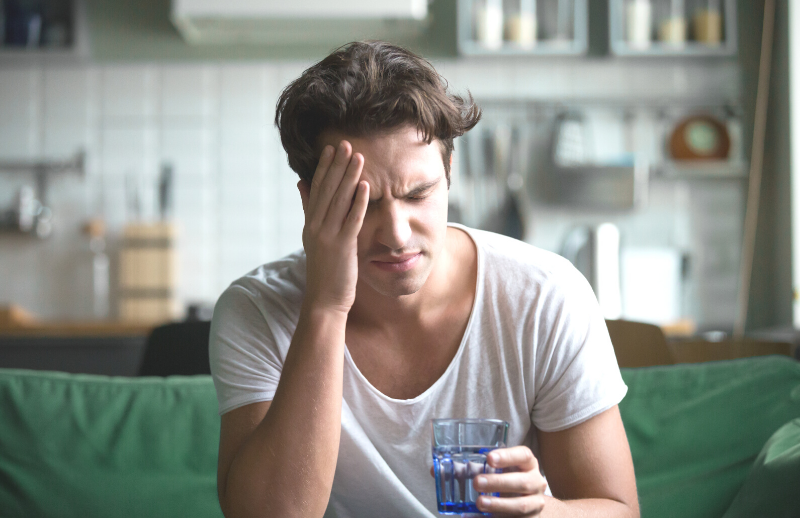
Compiled by our Masters trained Physiotherapist Chris Smith. To book an appointment with Chris, or read his Meet the Team profile CLICK HERE.
Headaches can be complicated! They can span from mild to debilitating and have a range of potential causes making them tricky to manage for patients and healthcare professionals. A physiotherapist's role in headache is to differentiate the likely cause of headache through thorough questioning and examination, and then refer to the correct health professional or attempt to treat the headaches if appropriate. So let's look at some types of headache first.
Broadly speaking headaches can be classified as primary and secondary headaches. Primary headaches are not caused by another disease process or condition and occur within the brain itself. The most common form of this is migraine, tension headache or headache from a cold or excess alcohol. Secondary headaches however develop as a secondary symptom to an underlying condition or anatomical structure. Examples of this include infection, head injury and tumor. As can be seen these types of headache may need immediate management and onward referral. Cervicogenic headache referred from the upper cervical spine (neck) is also a type of secondary headache.
Tension-type headache - The most common type of primary headache and affects more that 40% of the population worldwide. It is characterised by mild to moderate pressure on both sides of the head without any other symptoms. It is usually located around the temples It is currently proposed that pain receptors in the muscles around the skull may be responsible for this type of headache.The pain with tension type headache tends to be pretty steady and chronic despite changes in activity
Migraine - Another common form of primary headache. Additional features in migraine are the inclusion of symptoms such as nausea, photophobia (sensitivity to light), and phonophobia (sensitivity to sound). Migraines are more commonly one sided. Change in physical activity often aggravates migraine headache. Migraines can also cause symptoms of Aura which includes visual, sensory, or speech symptoms that appear gradually, last no longer than 60 minutes, and are completely reversible.
Cervicogenic headache - The upper cervical spine (neck C1-3) shares common nerve structures to other parts of the brain and can refer pain into the head causing secondary headaches. This basically confuses the brain into thinking that the pain is coming from the head rather than the neck. These can follow episodes of head trauma or whiplash or start insidiously following periods of intense computer work. They are more commonly one sided and often associated with neck stiffness/pain, restricted neck movement and reproduction of pain/headache when therapists examine the neck.
There are also various muscles around the head and neck which have the potential to refer pain into the head to be perceived as headaches.
Trigger point referral patterns from Upper fibres of trapezius and sternocleidomastoid.
If the neck joints of muscles are thought to be responsible for a headache then treatment of these structures with manual therapy and exercise may help in the management of reducing cervicogenic headache. In relation to cervicogenic headaches research has demonstrated that physiotherapy for 6 weeks comprising both exercise and manual therapy in addition to a combined approach of the 2 interventions can significantly reduce headache frequency, intensity and neck pain 6 weeks of treatment. We also have clinicians trained in the Watson Headache technique in order to assess the upper neck and treat with manual therapy. So if a headache is bothering you come and see one of the physiotherapists trained in headaches to see if we can help.
Recent Comments